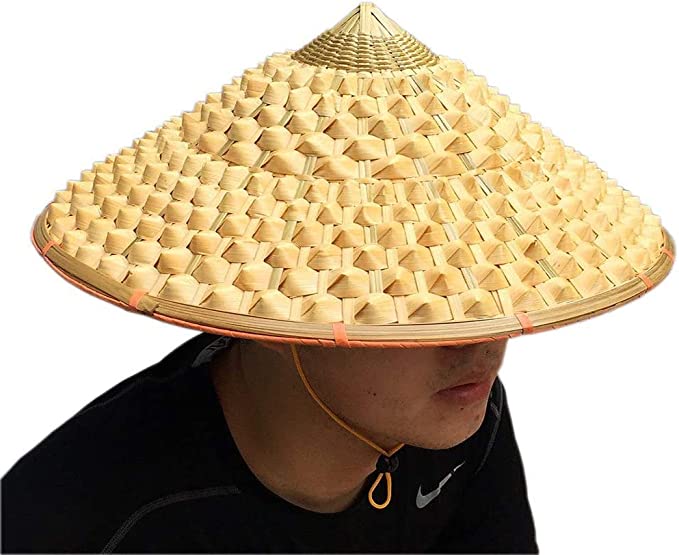The china hat is a straightforward design of spherically shaped floppy hat that originated in East, South, and Southeast Asia. It is noteworthy in modern nations and regions of China, Bangladesh, Myanmar, Bhutan, Malaysia, Indonesia, Cambodia, Philippines, Japan, India, Laos, Korea, outer Manchuria, and the US. It is also referred to as an Asian conical or Asian rice hat, rice hat (especially in the US), coolie hat, or Chinese hat (in the UK). A fabric (typically silk) or fiber chin strap holds it to the head.
Uses:
Asian conical or china hats are generally used for sun and weather protection.
It can be soaked in water and carried as an improvised evaporative cooling system if it is composed of straw or other weaving fibers. As it is frequently worn by pilgrims and Buddhist monks in pursuit of alms, it is also widely recognized throughout East Asia, particularly in Japan, known as Kasa. Samurai and foot troops in Japan used tougher, even metal, variations known as jingasa (fighting Kasa) as helmets.
Mandarins wore tighter round hats, especially during the winter, although it was often related to farmers in China.
Like Borneo and India, common people wore basic china hats while working every day, but festive occasions called for more elaborately colored versions.
In Assam, they hang in homes for decor or adornment or are worn by the higher classes on special events, whereas in Sabah, they are used for particular dances.
Other Names:
Sedge hat, rice hat, paddy hat, bamboo hat, and occasionally coolie hat are all words used to describe hats in English. But remember that the term “coolie” is frequently seen as a racial epithet.
It is referred to by a number of different names in Southeast Asia, including khamauk in Myanmar, do’un in Cambodia, koup in Laos, caping in Indonesia, terendak in Malaysia, sarok, salakot, sadok, hallidung, s’laong, tabungaw and kallugong, in the Philippines, and nón lá in Vietnam.
In East Asia, it is referred to as dul, Chinese for “one-du bamboo hat,” Kasa in Japan, and satgat or gaerip in Korea.
Features:
- Handcrafted china hats are made entirely of bamboo.
- This hat protects you from the intense solar heat and even your shoulders.
- It has an adjustable draw rope that you can simply drag up or down to keep your hat in position securely when not in use, and you may put it in your living room or bedroom while not in use.
- There is some ventilation within the hat to keep you cool since the mesh prevents the hat from contacting your head and allows air circulation that will provide the user with a cooler effect.
- The head ring’s plastic interior is durable and comfortable to wear.
- A straw hat that is lightweight and made for agricultural use.
- Includes an adjustable tie rope and a head location.
- Natural fibers keep you cool by allowing air to circulate through.
- The one size fits everyone.
- Excellent for outdoor tasks like gardening and fishing.
Final Words:
A china hat made of straw or bamboo allows airflow and keeps the person cool. It gives appropriate protection from solar heat. It is very useful to use while performing outdoor tasks during intense summer days to be comfortable, calm, and cool.
